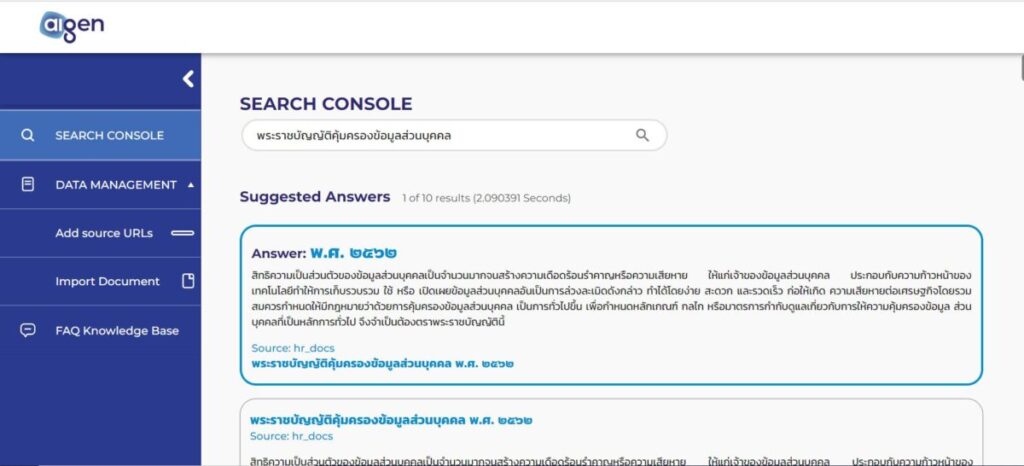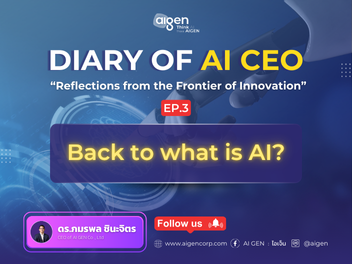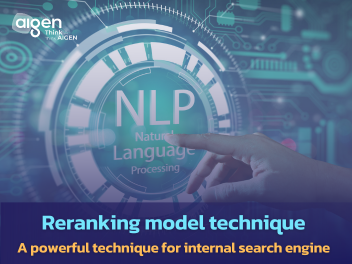An Overview of KMS and Its Impact on Knowledge Management
We’ve all heard the phrase, “Knowledge is power,” and every day, we become more aware of the power that knowledge holds in our professional and personal lives. In recent years, the world has faced a shortage of high-end technology skills essential to many businesses, including large corporations.
Finding highly skilled employees often requires a significant investment. One of the best ways businesses can cope is by recognizing, nurturing, and training those knowledgeable and skilled employees from the start. Knowledge is a valuable asset, and 74% of organizations predict that effective knowledge management can boost their productivity by 10-40%. Considering this, it’s not surprising that a lack of systematic knowledge management can cost organizations up to $31.5 billion annually (for Fortune 500 companies).

What is KMS?
Knowledge management is a set of tools, processes, methods, practices, and behaviors designed to enhance organizational performance. It involves identifying, storing, evaluating, retrieving, and sharing knowledge across the organization. This knowledge may include databases, workflow processes, documents, work policies, and specialized expertise that were previously hard to capture in data form.
For businesses, knowledge management is often referred to as knowledge-driven business management. It facilitates the use and sharing of knowledge to promote learning and innovation throughout the organization. It also ensures that employees have equal access to information and knowledge, particularly specialized knowledge unique to the business that cannot be found elsewhere.
Knowledge management systems focus on storing and managing existing knowledge. This involves gathering insights and communicating them in ways that engage people and make them eager to learn more. But how can organizations maintain the emotional and contextual integrity of information? The best approach is to enhance the use of existing media within the organization and develop channels through social media to keep organizational knowledge in constant conversation among employees or customers.
Knowledge management significantly impacts work methods, behaviors, organizational culture, leadership challenges, and, in some cases, the need to confront a “not created here” culture. This is vital to support and make employees feel safe sharing their failures as much as their successes. Business knowledge management encompasses all these aspects—work processes, behaviors, learning, technology, and networks. This is what makes knowledge management a fascinating and continually evolving discipline.
Types of Knowledge in Knowledge Management Systems
There are three types of knowledge essential for organizational knowledge management:
1. Explicit Knowledge
This is knowledge that is documented and can be transformed into various articles. It includes explanations or processes needed to achieve desired outcomes. Examples include clothing measurement steps and fabric information, or where to change login details for software. Businesses can gather explicit knowledge by fact-finding with experts in specific fields.
2. Implicit Knowledge
This is information that requires customers to infer or conclude based on explicit knowledge. Customers must interpret or deduce from existing data to achieve the desired results. An example would be how to use certain software features to meet business needs. Gathering implicit knowledge involves creating documents that explain how to apply it in business use cases and how it should be combined with other types of knowledge to achieve desired outcomes.
3. Tacit Knowledge
Tacit knowledge is gained through experience and typically requires context and practice to acquire. For example, knowing what to do in an emergency or understanding that a particular brand of shoes doesn’t adequately support your foot arch. Tacit knowledge is hard to gather because it’s often tested or learned individually. Start by having experts or senior team members share complex knowledge, which can then be used to create training content.
An example of combining these three types of knowledge would be: explicit knowledge is knowing what apples, cinnamon, flour, and sugar are; implicit knowledge is knowing that these ingredients can be made into a pie; tacit knowledge is knowing how much of each ingredient to use to make the most delicious pie.
Why Should Businesses Use a Knowledge Management System?
A knowledge management system ensures that organizations manage knowledge effectively and keep information up-to-date. Whether your company provides software services to various business clients, consumer goods online, or manages helpdesk services for employees, a knowledge management system enables efficient information delivery to those who need it.

1. Customers Can Find Answers Themselves
Customers don’t always need to call and talk to a representative to solve their issues. If customers can search for information on your business’s website and find the answers they need, it saves them time waiting on hold to speak with someone.
Self-service, where customers can find answers on their own through company-provided documents, is one of the most effective ways to serve customers. Implementing a search feature, a critical component of a knowledge management system, significantly reduces the number of tickets or customer inquiries that need to be handled by support staff.
Moreover, a knowledge management system allows businesses to offer 24/7 service, enabling customers to find the answers they need at any time.
2. Provide Answers for Frequently Asked Questions
Providing answers to common questions can help convert website visitors into actual customers. A knowledge management system can automatically identify the most searched terms and the most visited pages on your website, so you know exactly what your customers are interested in.
3. Information is Always Updated and Easily Searchable
A knowledge management system helps organizations identify outdated or obsolete information and update it as needed. This is a significant advantage compared to storing documents in folders, which can become disorganized and hard to navigate. A well-maintained knowledge management system ensures that important information is neatly organized and easily searchable, allowing employees and external customers to find the information they need in real-time.
If your system has a rating feature, customers can notify your business if an article isn’t helpful, giving your internal team the opportunity to improve it. Outdated information can lead to customer misunderstandings and potential loss of business, so keeping your information up-to-date is crucial.
Organizations can also use knowledge base articles to inform customers of temporary fixes while working on permanent solutions. By clearly categorizing temporary and permanent articles, it’s easier to review and remove temporary content once the final version is uploaded to the website or database.
4. Switch from Email Responses to Knowledge Management Articles
Do your service employees spend too much time drafting detailed emails to customers? If you’re using a modern KMS, you can leverage the knowledge stored in the system to replace lengthy email descriptions with educational articles. While communicating with a customer, your staff can simply forward a response to the organization’s knowledge base email, and the system will automatically create a draft article for your team.
This approach saves time on repetitive email explanations and consolidates information into a central knowledge base that everyone in the company can access and use.
3 Examples of Using a Knowledge Management System in Business
Businesses can implement a knowledge management system to enhance internal knowledge management and improve employee and customer experiences as follows:

1. Internal Search Engine System
By consolidating data into a single database and creating an internal search engine, employees can quickly and accurately retrieve the information they need. This saves time and is particularly useful for customer service departments looking for answers to customer inquiries or HR departments where employees need to find specific information on their own.
2. Document Search System
This component of a knowledge management system replaces traditional document searches, where employees would manually open individual PDF files to find the information they need, which can be time-consuming. With advanced technology, this process becomes easier, faster, and more efficient, allowing businesses to search for information by keyword and locate answers, with the system automatically highlighting the results.
3. Customer Self-Service System
Businesses can use knowledge management systems to create customer self-service portals on their websites or integrate them with chatbots. This allows customers to search for information and resolve minor issues independently, reducing wait times and enhancing the customer experience.
How Knowledge Management Systems Enhance The Customer Experience
Knowledge management systems not only benefit your business but also provide significant advantages for your customers. When customers encounter minor issues, they don’t have to call the company, wait on hold, and explain their problems to a representative. Instead, they can find the information they need on your website or app and solve the problem themselves.
A well-prepared knowledge base is key to enabling customers to help themselves. Here are three ways a knowledge management system can elevate your customer experience:
1. Reduces Waiting Time
Customers can find answers in your knowledge base faster than waiting on hold for a representative. Additionally, online help centers are available 24/7, ensuring that your knowledge management system is ready to assist customers anytime, day or night.
As more customers find answers on their own, you’ll notice a decrease in the number of customer cases or tickets, meaning those who do need to speak with your staff will receive quicker service. Therefore, this shift towards using a knowledge management tool for simple questions benefits all your customers.
2. Empowers Customers to Solve Problems on Their Own
According to a Harvard Business Review study, 81% of customers try to solve their problems themselves before contacting customer support. Furthermore, 91% of customers said they would use the company’s knowledge management system if it met their needs. This shows that customers prefer to find answers and solve issues independently rather than calling customer service for help. To meet customer needs and keep them satisfied, the best thing your customer service team can do is prepare an easy-to-use help center. Continuously improving your communication content helps reduce customer churn, increases brand loyalty, and cuts down on customer acquisition costs—a win-win situation.
3. Detailed Customer Assistance
There’s much you can convey through email or phone calls, but a Knowledge Management System (KMS) allows you to integrate various media formats, enhancing your ability to assist customers effectively.
Every customer learns differently—whether through text, video, or images. By preparing various media formats in your customer support center, your business ensures that all customers receive the help they need, regardless of their preferred learning style. This approach is effective even if some customers prefer not to read online content.
Instead of crafting detailed emails every time, your support staff can simply link existing information from the KMS, saving time and empowering customers to find answers independently in the future.
Elevate Your Business’s Knowledge Management with AI Technology
AIGEN’s AI-Powered Knowledge Management System
As mentioned earlier, customers often try to resolve issues independently using information provided by businesses in their Knowledge Management Systems. It’s crucial for businesses to have the necessary information readily available. AI technology plays a vital role in enhancing the efficiency of KMS, making it more organized and better suited to today’s customer behaviors.
AIGEN has developed an AI-powered Knowledge Management System tailored to businesses aiming to improve their internal information search efficiency. This ready-to-use AI-KMS, accessible through a web interface, is powered by AI-OCR and NLP technologies. These enable rapid and accurate data processing from various sources, allowing businesses to easily implement an AI-KMS by simply uploading their data through a backend or Content Management System (CMS). The system is equipped with comprehensive features that facilitate the operations of modern businesses, including:
- Support for uploading various file types, such as PDF, Word, and website URLs.
- AI-powered data processing and learning to select and highlight the best answers when users search for information.
- Support for both keyword searches and context-based Q&A searches.
- Displaying information sources so users can choose the most reliable data.
- A user-friendly Content Management System for easy data management.
Implementing Knowledge Management in Your Business
If your organization or business is seeking an AI-powered Knowledge Management solution to enhance internal knowledge management but is unsure where to start, we have AI and business experts ready to assist. AIGEN is your trusted partner in implementing effective KMS solutions. Consult with us today.
ทีมงานผู้เชี่ยวชาญด้าน AI อัจฉริยะ พร้อมช่วยขับเคลื่อนการทำงานของธุรกิจ มีประสบการณ์ให้บริการโซลูชัน AI เพื่อองค์กรระดับประเทศมากมาย




